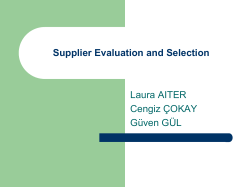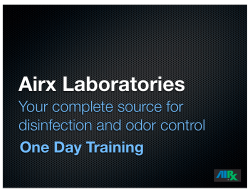
APIC Releases National Prevalence Study of
TECHNICAL BULLETIN An evaluation of the effectiveness of sanitation procedures using an accelerated hydrogen peroxide (Accel) disinfectant to reduce virus transmission via livestock transport vehicles (Schneider, P., Holtkamp, D., Ramirez, A., & Zhang, J., 2013 ) Abstract Disease outbreaks within the swine industry can be devastating with mass economical costs. With the constant threat of disease emergence, industry is looking to new chemical formulations, vetted protocols, and scientific support as a front line of defence for their biosecurity. This study tests the efficacy of a relatively new yet proven chemistry that is broadly used in healthcare facilities known as Accelerated Hydrogen Peroxide® (AHP®), recognized for its superior cleaning ability and realistic contact times, ensuring disinfection has taken place. Background Today's pork production industry is characterized by frequent movement of swine. With varying health statuses of transported swine and the necessity to transport multiple groups in a short period of time, make transportation vehicles a risk for spreading infectious diseases. Porcine reproductive and respiratory syndrome virus (PRRSV) and transmissible gastroenteritis virus (TGEV) are two viruses with large economic consequences that are capable of being transmitted by transport vehicles. Sanitation procedures to decrease pathogen load in standard equipment used in swine transportation are not always thoroughly cleaned between every transport event and can pose a risk to negative herds. Study This study compared the efficacy of Accel Concentrate disinfectant and Synergize disinfectant against PRRSV and TGEV in model livestock trailers under conditions similar to those experienced in commercial pork production. Additionally, this study used a bioassy to determine whether or not a sufficient quantity of live PRRSV and TGEV were present in the model trailers to infect pigs when inoculated intramuscularly (IM). Model livestock trailers were contaminated with a slurry mixture containing PRRSV and TGEV and allowed to sit in a 4° Celsius/39° Fahrenheit cooler for sixty minutes. The trailers were decontaminated using a high-pressure washer with cold water for 90 seconds. Trailers were then disinfected using Accel and/or Synergize. Four samples at 5 time points were collected for each trailer replicate. Time points included pre-wash, immediately post-wash, and at 15, 30 and 60 minutes post disinfection. For each replicate, samples from each time point were pooled and tested for the presence of PRRSV and TGEV. PTSAH0108.0(05/2015) TECHNICAL BULLETIN In order to test whether a sufficient quantity of live PRRSV and TGEV were present in model trailers to infect pigs when inoculated intramuscularly, 24 10-week old PRRSV and TGEV negative pigs were challenged with a minimum of 4mL of supernatant by IM injection and 7mL by oral gavage. Bioassy groups were monitored for 14 days. Blood and fecal samples were collected and tested for the presence of PRRSV or TGEV at days 7 and 14. Results Results from this study show that Accel disinfectant decreased the amount of PRRSV genomic copies on board the contaminated model trailers quicker than Synergize disinfectant or no disinfectant when paired with a 90-second cold-water, high-pressure wash. Both Accel and Synergize were effective at inactivating PRRSV by 15 minutes post-application of disinfectant. A cold-water, high-pressure wash alone was not effective at preventing inoculated bioassy pigs from becoming infected with PRRSV with samples collected 15 minutes post-washing. The efficacy of Accel and Synergize against TGEV could not be assessed due to the inability to maintain positive control groups throughout the course of the study. However, no bioassy pigs tested positive for TGEV. Conclusions When time constraints prevent the gold standard of cleaning, disinfecting and drying of trailers, a limited washing procedure combined with the proper use of a disinfectant, such as AHP is effective at inactivating the presence of PRRSV in the environment. Implications for AHP 1. AHP Disinfectants are One-Step Disinfectant Cleaners One-Step Disinfectant Cleaners provide you with added confidence – you clean while you disinfect, and disinfect while you clean. 2. AHP Disinfectants have realistic contact times Short contact times ensure surfaces remain wet for the required contact time – providing comfort and confidence that disinfection has occurred. 3. AHP Disinfectants provide the perfect balance between safety and efficacy All AHP products at in-use solutions do not require the use of Personal Protective Equipment (PPE) without sacrificing germicidal potency against pathogens such as PRRSV 4. AHP Disinfectants are compatible AHP formulations are tested to ensure compatibility that preserve your investments in equipment, and building surfaces PTSAH0108.0(05/2015) TECHNICAL BULLETIN 5. AHP Disinfectants are environmentally sustainable AHP’s active ingredient, hydrogen peroxide, breaks down into water and oxygen leaving no active residues AHP products have been inherently proven to be biodegradable indicating that properly maintained septic systems and/or manure pits can handle normal wastes generated from the use of AHP formulations PTSAH0108.0(05/2015)
© Copyright 2025









